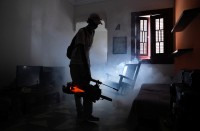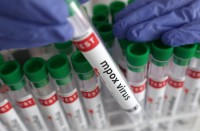(Reuters) – Environmental factors are more important than previously thought in leading to autism, as big a factor as genes, according to the largest analysis to date to look at how the brain disorder runs in families.
Sven Sandin, who worked on the study at King’s College London and Sweden’s Karolinska institute, said it was prompted “by a very basic question which parents often ask: ‘If I have a child with autism, what is the risk my next child will too?'”
The findings, published in the Journal of the American Medical Association (JAMA), suggest heritability is only half the story, with the other 50 percent explained by environmental factors such as birth complications, socio-economic status, or parental health and lifestyle.
The study also found that children with a brother or sister with autism are 10 times more likely to develop the condition, three times if they have a half-brother or sister with autism, and twice as likely if they have a cousin with autism.
“At an individual level, the risk of autism increases according to how close you are genetically to other relatives with autism,” said Sandin. “We can now provide accurate information about autism risk which can comfort and guide parents and clinicians in their decisions.”
People with autism have varying levels of impairment across three common areas: social interaction and understanding, repetitive behavior and interests, and language and communication.
The exact causes of the neurodevelopmental disorder are unknown, but evidence has shown it is likely to include a range of genetic and environmental risk factors.
As many as one in 50 school-age children in the United States are diagnosed with autism, although some of these will be milder cases that have been diagnosed partly because of better recognition of autism symptoms by carers and doctors. In Europe, experts say the rate is around one in 100 children.
For this latest study, researchers used Swedish national health registers and analyzed anonymous data from all 2 million children born in Sweden in between 1982 and 2006, 14,516 of whom had a diagnosis of autism.
The researchers analyzed pairs of family members, identical and non-identical twins, siblings, maternal and paternal half-siblings and cousins.
The study involved two separate measures of autism risk – heritability, which is the proportion of risk in the population that can be attributed to genetic factors, and relative recurrent risk which measures individual risk for people who have a relative with autism.
Most previous studies have suggested heritability of autism may be as high as 80 to 90 percent. But this new study, the largest and most comprehensive to date, found genetics factors only explained around half of the cause of the disorder.
“Heritability is a population measure, so whilst it does not tell us much about risk at an individual level, it does tell us where to look for causes,” said Avi Reichenberg, of the Mount Sinai Seaver Center for Autism Research, who worked on the study while he was at King’s College London.
He said he was surprised by the results, as he did not expect the importance of environmental factors to be so strong.
“Recent research efforts have tended to focus on genes, but it’s now clear that we need much more research to focus on identifying what these environmental factors are,” he added.







